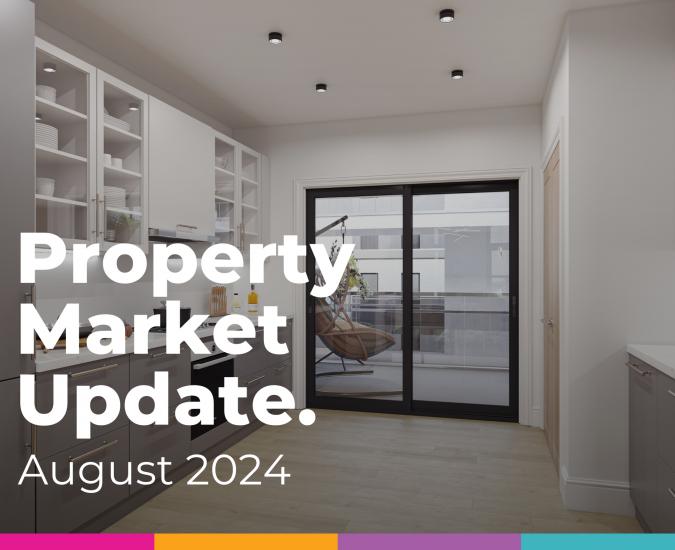Everything You Need To Know About Due Diligence
Last updated 25th May 2022 • JaeVee Marketing • JaeVee
‘Due diligence’ is one of those terms which is often reeled out in the property lingo .
But even the best in the business can lose sight of what it means.
Here we'll get you familiar with what it means, even let you in on some lesser known tips.
What is Due Diligence?
Due diligence is more basic than it might seem at first.
It’s simply the process of properly evaluating a property before you take the jump and buy. All it really boils down to is research.
Throughout this process you’ll start to understand what the property’s real market value is likely to be.
It allows you to realise some of the risks, giving you the choice to avoid them or decide to invest in another property all together.
Some investors think that due diligence just sums up the basic background checks that one undertakes before they buy their property, or even after the terms - a valuation, survey and solicitor - are all agreed to.
But the bulk of due diligence needs to be done before any offer is even made. It prevents big mistakes being made further down the line.
This protects your investment as much as possible before you’ve ever parted with your cash.
Some property experts would even recommend that you turn down more deals than you accept, as proof to yourself that you have carried out the most thorough evaluation of the risks and benefits before you’ve made a deal that’s as risk proofed as anything in property can ever be.
Stick to your strategy
Before you look at wider details like the condition of the area, you should weigh up the property prospects and the consequences of investing or developing it against your overall property strategy.
Before you do anything, ask yourself these 2 key questions:
- Why are you thinking of developing this property in particular?
- How will it fit with your overall goals and strategy?
If you can't answer them, or the answer is no, you need to stop.
Either you need to do a thorough analysis of what exactly it was that caught your eye - or you need to cut off the deal before you go any further.
Are you able to answer these?
It'll be time to go into more detail about how it can fit into your strategy.
If you’ve decided to go with ‘flipping’ your property, for example, then you’ll need to take even more care in assessing whether the features of the property only need a face lift or a structural overhaul.
You’ll also want to find out how much refurbs generally cost in similar properties.
A great price on the market might not actually translate into the profits that you want once the costs of the refurb are taken into account.
If you’re looking to buy to rent, you’ll need to look at the average rent price in your area, as well as assess the features that the best performing properties all have in common.
Bonus Tip: A reliable roster of exit strategies are vital.
If you can’t exit the investment at your required gross development value (GDV), then you will have to reduce your asking price and cut your profits.
Or you’ll have to wait to exit, which can do a number on your financing costs.
These unpleasant scenarios are why you should always whip up a plan B or even C for every property that you’re looking into.
Price vs Value
A key consideration for property.
You should look to buy below market value in order to plump up your final profit.
But it will be harder in some areas than others, you could find yourself stuck with a high maintenance refurbishment project if you’re determined to play an unreasonable lowball.
What’s more important is that you make sure you never overpay.
Even when you see the property has some dazzling potential.
So, you have to check the sold prices on comparable properties.
Make sure that you’re not just looking at what they’re selling for either, as there’s no guarantee that anyone’s actually prepared to buy them at that price.
You should also make sure that the properties you look at are truly comparable - an extra bedroom, more space in the garden, or easier parking access - could all tip one property slightly higher over the scale than the other.
You should also only compare within 0.5 miles of your chosen local area.
And thorough research in your area is also incredibly important:
Understanding the local area
An essential part of maintaining your due diligence is making sure that you’re looking to develop in a viable local market.
You need to know that your property has a real chance of success once it’s out on the market.
You’ll need to check that the market is active and in good health.
- How are the sales looking in your area?
- What are the buyer profiles like?
- What kind of property is selling the best?
You should also look for signs of any downward trends.
Watch out in case there’s a significant portion of people moving out of the area, if the average income is lower than you’d need to create profit on your property, or if there are slow signs of decline such as more empty houses accumulating.
You’ll have to look at questions specific to your ideal property owner or tenant as well.
If you want to house a family, is there a good range of well rated schools near to the area?
If the person you are hoping to sell to is a first-time buyer then you need to make sure that there are first time buyers looking at the area, and so on.
Top Tip: You can go over to here Homecheck so you can find information on everything from flooding, landfill and subsidence to planning information and crime rates in your local area.
Ensure you’ve secured finance
If your project is dependent on extra funding like development finance, you should ensure this has been secured before you enter into any development.
You should make your development subject to obtaining this finance on the rates and conditions that you’ve set out in the cost analysis.
Ensure accurate construction costs
Construction costs can make or break a project.
You have to include every possible cost in your calculations, each at a realistic estimate.
You could always ask for an independent quantity surveyor to verify these costs for you.
You should always make sure that you build the necessary contingencies into your cost analysis.
The standard for construction contingency is usually about 10% of the construction cost budget.
House conditions
If you’re looking at any type of refurbishment strategy, this is completely essential, before you put any cash on the table, you’ll need to have a second visit.
This is where you stop looking at the big picture and start analysing the little details - that can make or break a good investment.
According to Jeremy Leaf Estate Agents, only one in five purchasers bother investing in a survey, comprehensive building survey or homebuyer's reports.
So many people rely on their own keen eyes - but you should only do this if you’re 100% sure that you can look out for these key details on their own:
Subsidence: You can check for diagonal cracks which the original owner may be trying to ‘cleverly’ cover up by a repaint or any props such as bookcases or old doors.
You can also open and close a few doors to see if they stick. Internal walls can have plaster cracks but long diagonal ones that correspond to outside cracks are certainly things to watch out for.
Damp: It might seem pretty obvious but your first port of call should be to try and ‘sniff it out'.
Does it smell musty? Take a good look around too - especially in areas like the ceiling, and for bubbling at the corners of wallpaper.
Electrics: Apparently nearly half of all old houses have out of date circuit breakers.
This can be a costly repair - up to £800! It’s also something relatively ‘small’ that can indicate worse problems with the rest of the wiring.
Plumbing: Check things such as the silicon sealant around the shower and bath - this could save water pouring through the ceiling!
The Boiler: You should ideally find a modern condensing boiler, as a new boiler can be a big expense to sink into a project.
You should also turn the hot tap on and stand near the boiler to check how much noise it starts to make.
Insulation: Check for double glazing and ask if there have been any insulation improvements made on the property recently.
Parking & neighbourhood noise: You can check the noise by visiting the house at different times of day and recording the noise and traffic levels as they change.
That way you can see how the nearby roads are affected by the school run or post work rush hour. In terms of the neighbours you should also ask their age.
A family won’t want to live next to 20 year olds hosting loud parties. It also wouldn’t be a good idea to situate students next to a retirement complex, for example.
You should also ask to listen to the floorboards.
Creature features: When looking for potential pest problems, you should check the carpets for moths, which can be a real pain to get rid of and often recur.
You could also try taking off the kickboards in the kitchen if the seller isn’t there. You might find some nasty surprises there - such as mice or insects.
Mice aren’t too surprising in old houses, but you should at least check for poison and ask if the sellers have tried to get rid of the problem.
NEW doesn’t mean foolproof: It’s a prevalent myth that a modern house means there’s less to look for.
But developments are often thrown up in a hurry to avoid penalty clauses - so even newer builds can have some pretty major problems.
Predict and mitigate planning risks
Everyone hopes that their property will pass through the planning stages quickly and without any problems.
But you should always protect yourself by making yourself aware of the risks if your planning permission isn’t granted, or if you need to reduce the parameters of your project.
You should analyse the project from the worst case scenario.
- Have you submitted a pre-application to reduce risk?
- Could your project even work without planning in place?
- Is the planning that you've been granted sufficient for your build?
You should always try to avoid having to go back to the planning stages because of any oversight or amendments that need to be made.
If you don't you might have to deal with extra deals and costs.
Put in your own equity
Putting in your own funds is one of the best things any developer can do. It shows tangible proof of commitment.
It gives everyone involved in your project evidence that you are fully motivated to finish your project on time and in budget.




